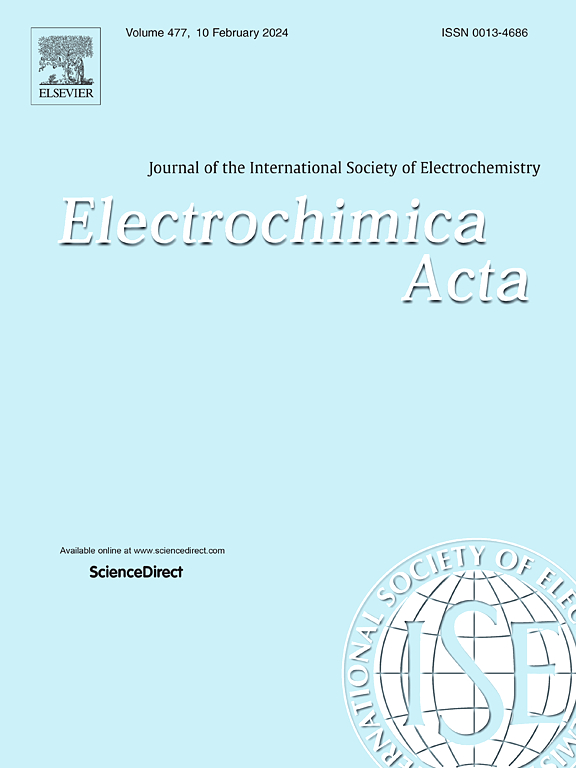花状Cu2ZnSnS4 (CZTS)过渡金属硫化物(TMS)在可充电锂电池中的微结构电极研究
IF 5.6
3区 材料科学
Q1 ELECTROCHEMISTRY
引用次数: 0
摘要
可充电锂电池具有高能量密度的优点,具有广泛的潜在应用,从便携式电子产品到高能耗的电动汽车。最近,过渡金属硫族化合物被认为是电化学储能装置中微结构电极的有前途的候选者,因为它与商用锂离子电池(LIB) (~ 372 mAh g - 1)相比具有更高的理论容量(~ 847 mAh g - 1)。因此,本工作旨在利用电流法研究过渡金属硫族化物Cu2ZnSnS4 (CZTS)微结构电极的容量、性能和循环稳定性。采用溶胶-凝胶法制备CZTS,并在550℃氮气气氛下进行硫化。结构分析表明,CZTS纳米花具有kesterite相的形貌,平均化学计量成分为Cu2.2Zn1.9Sn1.5S4。制备的CZTS-Li半电池在3.0 ~ 0.01 V (vs. Li+/Li)电位范围内具有较高的可逆容量,但在室温下缺乏循环性能。获得的初始放电容量为~ 578.89 mAh g−1,这表明kesterite CZTS可以成为锂-CZTS可充电电池的极具前景的电极材料。本文章由计算机程序翻译,如有差异,请以英文原文为准。
Flower-like Cu2ZnSnS4 (CZTS) transition metal sulphide (TMS) as a micro-structured electrode in rechargeable lithium batteries
Rechargeable lithium batteries exhibit the advantages of high energy density with a broad range of potential applications, from portable electronics to highly energy-demanding electric vehicles. Recently, transition metal sulphides (TMS) have been regarded as a promising candidate for a microstructure electrode in electrochemical energy storage devices because it has a higher theoretical capacity (∼847 mAh g−1) compared to a commercial lithium-ion battery (LIB) (∼372 mAh g−1). Thus, this work aims to explore the capacity performance and cycling stabilities of the transition metal sulphide, Cu2ZnSnS4 (CZTS) microstructure electrode using galvanostatic technique. The CZTS was synthesised via the sol-gel method followed by sulphurisation at 550 °C under nitrogen atmosphere. The structural analysis showed that the CZTS nanoflower took on morphology of kesterite phase and possessed an average chemical stoichiometric composition of Cu2.2Zn1.9Sn1.5S4. The as-prepared CZTS-Li half-cell configuration exhibited high reversible capacity but lack in cycling performance at room temperature under a potential window from 3.0 to 0.01 V (vs. Li+/Li). The achieved initial discharge capacity is obtained at ∼578.89 mAh g−1, which suggests that the kesterite CZTS can be a promising electrode material for rechargeable lithium-CZTS batteries.
求助全文
通过发布文献求助,成功后即可免费获取论文全文。
去求助
来源期刊

Electrochimica Acta
工程技术-电化学
CiteScore
11.30
自引率
6.10%
发文量
1634
审稿时长
41 days
期刊介绍:
Electrochimica Acta is an international journal. It is intended for the publication of both original work and reviews in the field of electrochemistry. Electrochemistry should be interpreted to mean any of the research fields covered by the Divisions of the International Society of Electrochemistry listed below, as well as emerging scientific domains covered by ISE New Topics Committee.
 求助内容:
求助内容: 应助结果提醒方式:
应助结果提醒方式:


